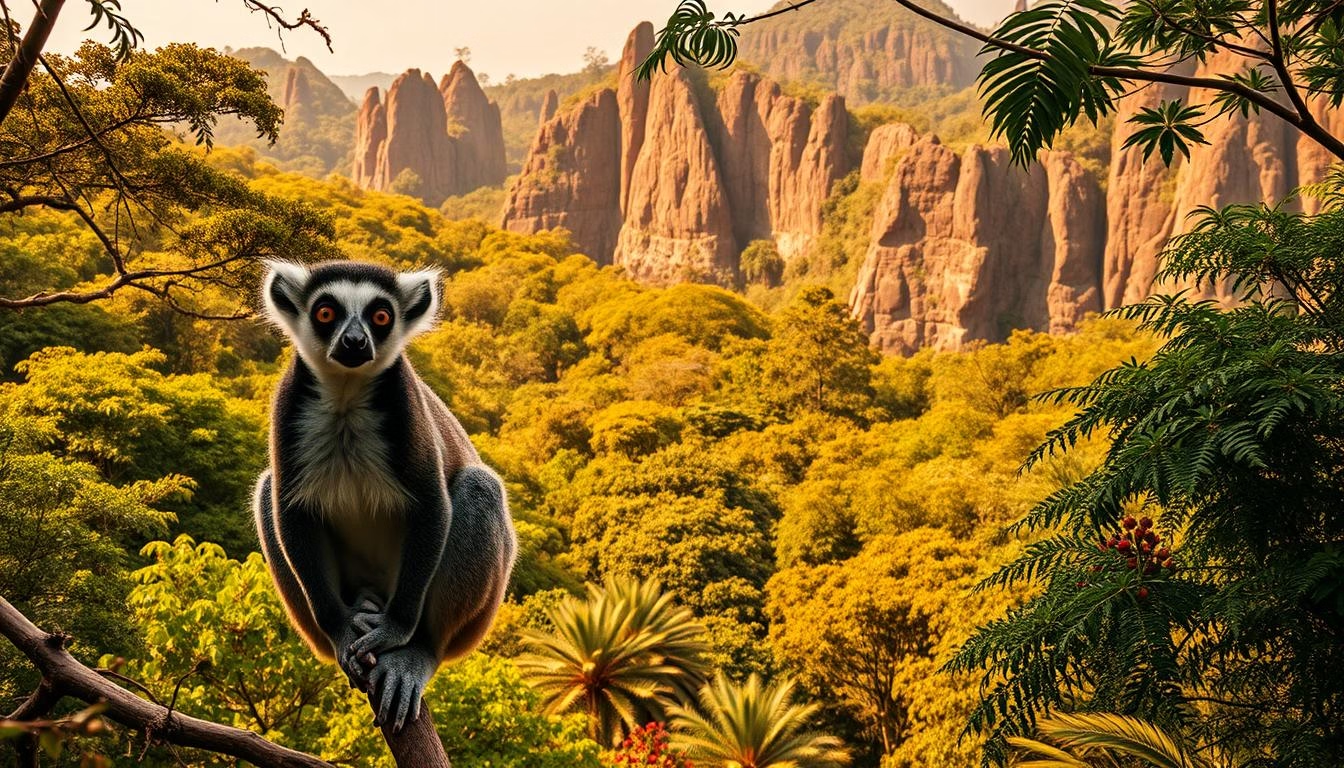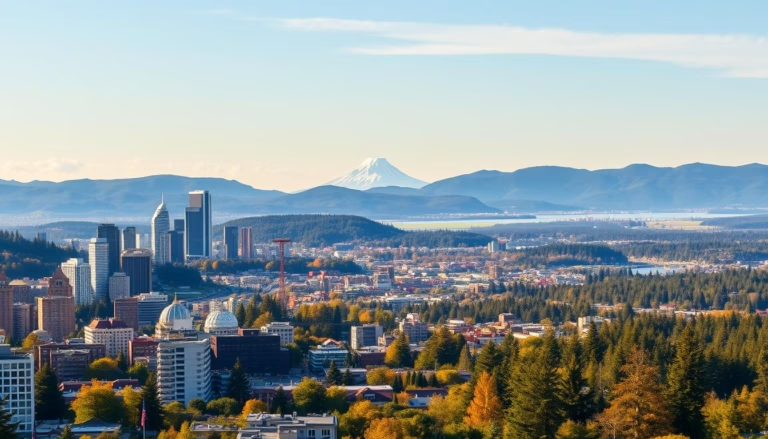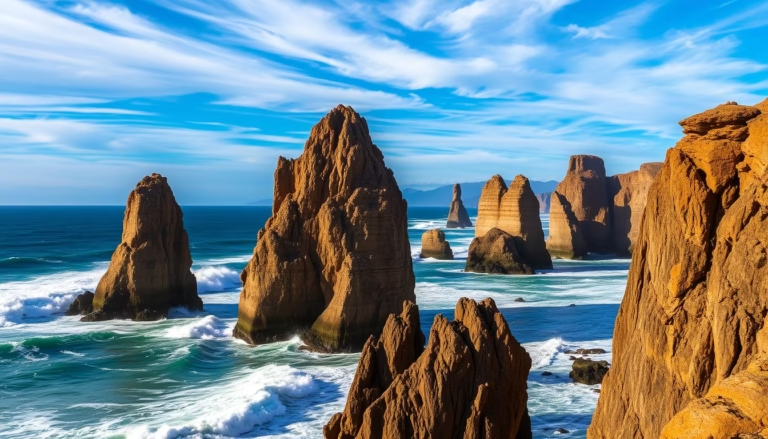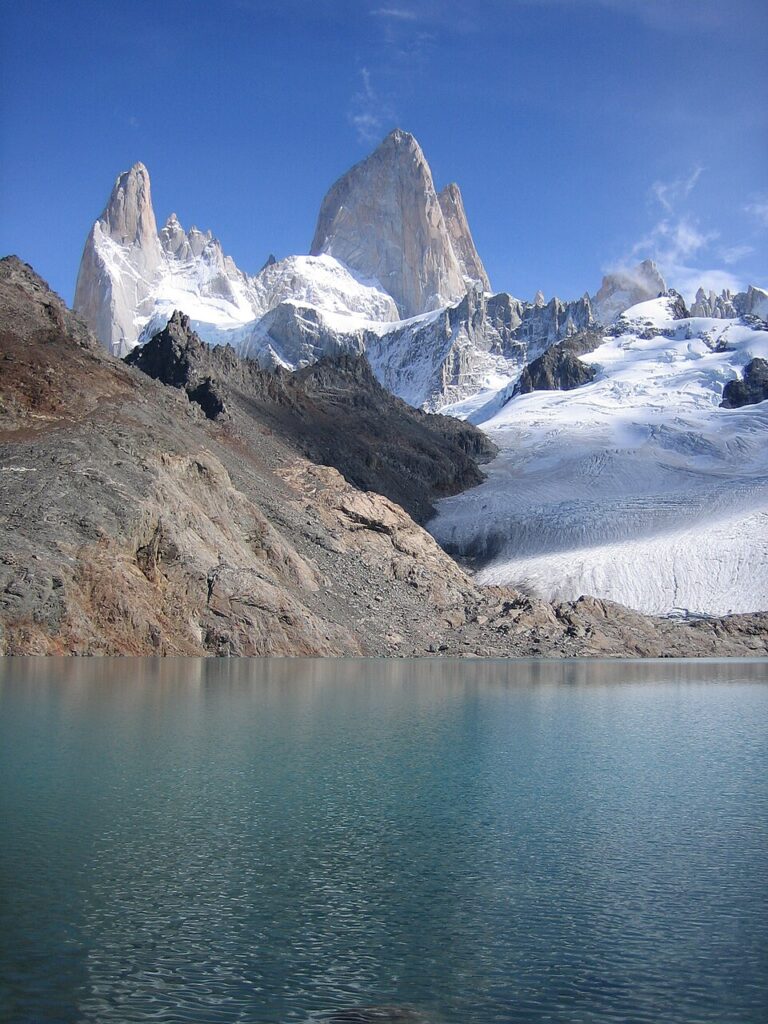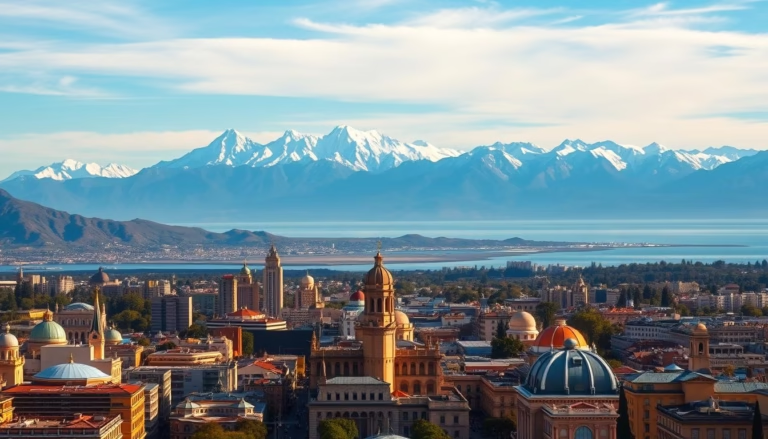Top Tourist Attractions in Madagascar to Visit
Nicknamed “the Eighth Continent” for its otherworldly biodiversity, this island nation offers landscapes and wildlife unlike anywhere else. Over 90% of its plants and animals exist nowhere on Earth, from playful lemurs to towering baobabs shaped like upside-down trees. Every journey begins in Antananarivo, the vibrant capital where travelers prepare for adventures across rugged terrain and lush ecosystems.
Exploring this destination requires patience. Distances between sites stretch long, and roads often test even seasoned adventurers. But those who embrace the journey discover rainforests echoing with indri lemur calls, coral reefs teeming with marine life, and sandstone canyons painted in sunset hues. Each region feels like stepping into a new world shaped by 88 million years of isolation.
Whether trekking through misty national parks or relaxing on untouched beaches, the country balances raw natural beauty with cultural richness. Local guides share ancestral stories about chameleons that change color faster than a heartbeat and medicinal plants hidden in dense foliage. While logistics demand planning, the rewards—pristine ecosystems, rare animal encounters, and horizons free of crowds—create memories that linger long after departure.
Key Takeaways
- Madagascar’s nickname as the “Eighth Continent” stems from its unmatched biodiversity
- 90% of wildlife here exists nowhere else, including all lemur species
- Antananarivo serves as the main hub for accessing diverse regions
- Experiences range from rainforest hikes to snorkeling vibrant reefs
- Travel challenges are offset by truly unique natural encounters
- Local guides enhance visits with ecological and cultural insights
Discover Antananarivo: The Heart of Madagascar
Every journey through this island nation begins in its highland capital, where cobblestone streets wind past terracotta rooftops and bustling markets. Antananarivo – locally called “Tana” – sits 4,100 feet above sea level, offering crisp mountain air and panoramic views of rice paddies cascading down hillsides.
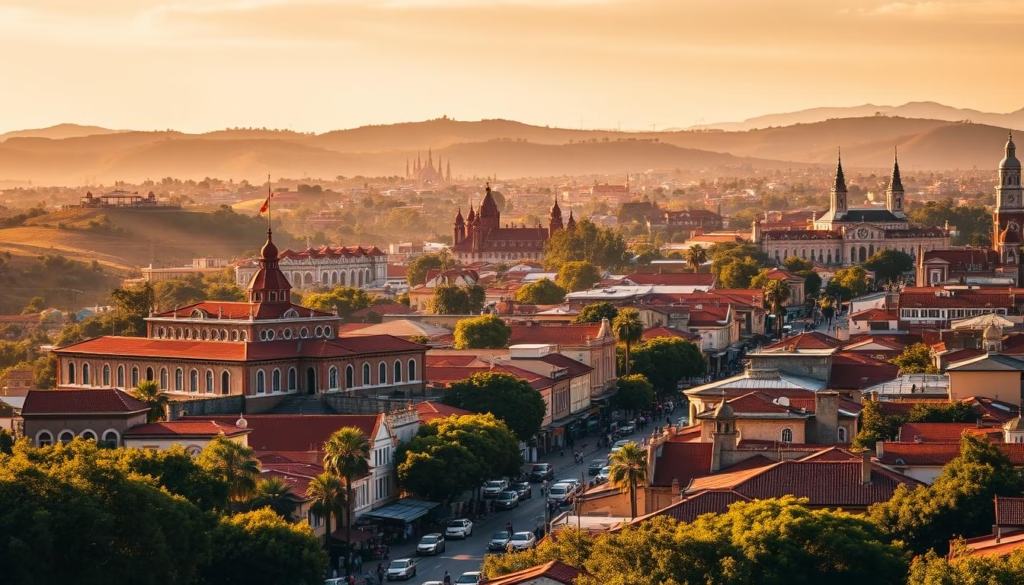
Experience the Capital’s Rich History and Culture
French colonial buildings stand shoulder-to-shoulder with traditional wooden houses adorned with carved balconies. The Rova of Antananarivo palace complex tells stories of Merina royalty through its reconstructed structures. Don’t miss Andafiavaratra Palace, housing royal artifacts that survived a 1995 fire.
Explore Local Markets and Authentic Cuisine
Analakely Market bursts with crimson-hued sakay peppers and baskets overflowing with vanilla pods. Street vendors serve romazava (beef stew) and mofo gasy (rice cakes) wrapped in banana leaves. For crafts, the artisan stalls at La Digue Market showcase raffia baskets and zebu horn jewelry.
| Market | Specialty | Best Time to Visit |
|---|---|---|
| Analakely | Spices & Produce | Morning |
| La Digue | Handicrafts | Afternoon |
| Petite Vitesse | Secondhand Goods | Weekends |
Locals gather at kudeta (small eateries) to share stories over coconut-curried dishes. The capital’s blend of African, Asian, and European influences creates a cultural mosaic you’ll taste in every bite.
Island Escapes: Nosy Be and Coastal Paradises
The scent of vanilla and ylang-ylang greets travelers arriving at Nosy Be, a lush island jewel off Madagascar’s northern coast. Framed by the Indian Ocean’s sapphire waves, this tropical haven blends powdery beaches with spice-scented jungles.
Pristine Beaches and Warm Indian Ocean Waters
Nosy Be’s shores dazzle with sugar-white sand and bathtub-warm turquoise waters. Madirokely Beach stretches like a ribbon of crushed coral, while Lokobe Reserve’s hidden coves offer secluded swims. The ocean here stays calm year-round, creating natural pools perfect for floating under cloudless skies.
Snorkeling, Diving, and Marine Adventures
Beneath the surface, rainbow-colored coral gardens burst with life. Dive sites like Tanikely Marine Park swarm with clownfish and graceful rays. For adrenaline seekers, Nosy Be’s steady winds make it a kite surfing hotspot. Local operators offer gear rentals and guided island-hopping adventures to nearby archipelagos.
| Island | Top Activity | Best For |
|---|---|---|
| Nosy Komba | Lemur Spotting | Wildlife Enthusiasts |
| Nosy Mitsio | Deep-Sea Fishing | Adventure Seekers |
| Nosy Ankao | Private Beach Picnics | Romantic Getaways |
After ocean adventures, tour family-run plantations where vanilla vines twist around cinnamon trees. The island’s mix of luxury resorts and beachside villages lets you unwind in style while experiencing authentic coastal culture.
Nature’s Masterpieces in National Parks
Madagascar’s protected wilderness areas showcase evolutionary marvels found nowhere else. Two parks stand out for their contrasting beauty—one draped in emerald rainforests, the other sculpted from ancient stone.
Ranomafana National Park: Home of the Golden Bamboo Lemur
Wander through 400 km² of misty forests where the golden bamboo lemur munches on cyanide-laced shoots—a snack that would kill most animals. Guided hikes reveal 12 other lemur species leaping through canopies, while night walks spotlight chameleons blending into moss-covered branches.
Don’t miss the park’s hidden waterfalls. Their crystal pools offer a refreshing dip after spotting rare birds like the pitta-like ground roller. With 106 frog species croaking after dusk, the forest transforms into nature’s concert hall.
Isalo National Park: A Striking Canvas of Stone
Swap rainforests for sandstone wonderlands at this national park. Wind-carved cliffs glow amber at sunset, framing natural swimming holes in desert oases. Hike the Namaza Trail to discover palm-filled canyons or challenge yourself with multi-day treks to La Fenêtre’s stone window—a perfect frame for twilight skies.
Local guides share secrets about medicinal plants thriving in cracks between boulders. Unlike Ranomafana’s wet climate, Isalo rewards visitors with starry nights perfect for camping under Madagascar’s clearest skies.
Explore the Tourist Attractions in Madagascar
Step into a world where evolution painted its masterpiece across unique ecosystems. Nearly 90% of the island’s flora and fauna evolved in isolation, creating living laboratories of adaptation. From bouncing lemurs to plants that store water for decades, every discovery feels like uncovering nature’s best-kept secrets.
Where Life Dances to Its Own Rhythm
Wander through forests where lemurs rule the canopy. Spot wide-eyed mouse lemurs hunting insects under moonlight or hear the haunting calls of indri echoing through misty valleys. Over 100 lemur species thrive here, each adapted to specific niches—some nibble nectar while others munch toxic leaves.
Beyond primates, watch chameleons shift colors in seconds and giraffe weevils with necks longer than their bodies. Local guides in diverse regions reveal how orchids trick pollinators and baobabs survive drought by storing 26,000 gallons of water.
Paths Through Living Museums
Madagascar’s hiking trails transport you between worlds. One day you’re beneath rainforest canopies dripping with orchids, the next you’re crossing sunbaked plains dotted with octopus trees. The challenging Makay Massif route rewards with canyon labyrinths, while Andringitra’s peaks offer sunrise views over alien-looking landscapes.
Every step introduces new wildlife—day geckos licking fruit nectar, comet moths with 8-inch wingspans, and leaf-tailed geckos masquerading as bark. Trails here aren’t just walks; they’re expeditions into Earth’s most imaginative workshop.
Mesmerizing UNESCO World Heritage Sites
Madagascar’s geological wonders reach their zenith at a site where stone meets sky in jagged perfection. Tsingy de Bemaraha Strict Nature Reserve stands as a UNESCO World Heritage Site that redefines adventure travel. Imagine walking across knife-edge limestone formations older than human history, their silver-gray peaks catching sunlight like natural cathedral spires.
Tsingy de Bemaraha: A Geological Wonder
Five million years of wind and rain sculpted this rock labyrinth into nature’s obstacle course. Local guides call it “tsingy” – meaning “where you can’t walk barefoot” – for good reason. Steel cables and suspended bridges let explorers navigate safely between the razor-sharp pinnacles.
The park home to rare wildlife thrives in this harsh environment. Look for Decken’s sifaka lemurs leaping gaps between limestone towers, or white-breasted mesites nesting in rock crevices. Over 90% of plants here grow nowhere else, including drought-resistant succulents clinging to vertical cliffs.
| Area | Experience Level | Highlight |
|---|---|---|
| Grands Tsingy | Advanced | Via ferrata climbs & canyon views |
| Petits Tsingy | Moderate | Manambolo River canoe access |
| Western Sector | Beginner | Baobab groves & sunset vistas |
Morning fog often blankets the site, creating an eerie atmosphere perfect for photography. After conquering the rock formations, cool off with a traditional pirogue ride through Manambolo Gorge’s towering cliffs. This UNESCO World Heritage treasure proves that Earth still holds landscapes beyond human imagination.
Cultural and Historical Landmarks Beyond Nature
While Madagascar’s wild landscapes often steal the spotlight, its human stories whisper through ancient stone walls and sacred hills. Just 13 miles from the modern capital, a UNESCO-listed treasure reveals the island’s sophisticated pre-colonial past.
Royal Hill of Ambohimanga: A Glimpse into Malagasy Heritage
This fortified complex served as the spiritual home of Merina kings for centuries. Walk through gates made from single stone slabs – some weighing 12 tons – that protected royal families from invaders. The site’s preserved baths and ceremonial altars show how rulers blended practical needs with sacred rituals.
Guides share tales of Queen Ranavalona I, who hosted elaborate feasts in courtyards now shaded by mango trees. Locals still leave honey and coins at sacrificial stones, maintaining traditions passed down through generations. From the hill’s summit, views stretch across terraced rice fields that fueled the kingdom’s power.
| Feature | Experience | Visitor Tip |
|---|---|---|
| Royal Baths | See sunken pools used for purification rituals | Arrive before 10 AM for quiet reflection |
| Sacred Forest | Spot medicinal plants used by healers | Wear sturdy shoes for uneven paths |
| Moon Gate | Photograph the iconic stone entrance | Best light occurs at golden hour |
The hill’s spiritual energy resonates strongest at dawn when mist clings to ancestral tombs. As one caretaker notes, “These stones remember every coronation and conspiracy.” For visitors, Ambohimanga offers more than history – it’s a living bridge to Madagascar’s enduring culture.
Island Adventures and Coastal Charms
Where else can you hear whale songs drift ashore like liquid moonlight? Île Sainte-Marie answers with black coral reefs and beaches framed by pirate lore. This slender island off Madagascar’s eastern coast blends marine marvels with swashbuckling history.
Whale Watching and Seaside Memories
From June to September, humpback whales transform these waters into nature’s theater. Mothers nurse newborns in sheltered bays while males breach in dramatic displays. Their haunting songs travel clearly through the quiet ocean – no engine noise to drown out Earth’s largest musicians.
Snorkelers glide over gardens of black coral, where clownfish dart between sea fans. Kayakers explore coves once hid pirate ships. On land, crumbling fortifications and a weathered cemetery whisper tales of 17th-century buccaneers.
Whether paddling through calm lagoons or tracing paths to hidden shipwrecks, every moment here feels like a treasure hunt. Sainte-Marie proves some adventures require neither maps nor compasses – just curiosity and saltwater in your hair.
